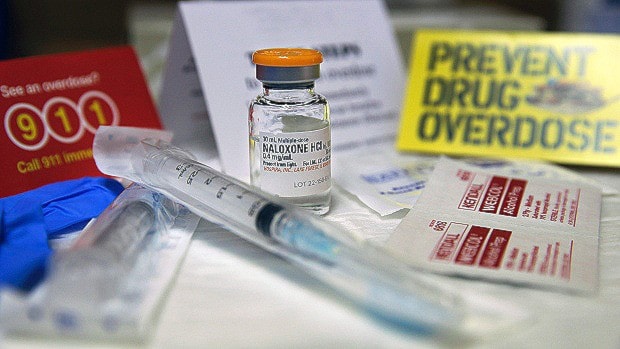Interior Health (IH) has begun implementing the Take Home Naloxone program in emergency departments throughout the region; and while Ashcroft Hospital is not part of the initial roll-out, IH Public Health Communications Officer Lesley Coates has confirmed that the ED in Ashcroft will be getting the Take Home Naloxone program within the next two months.
Naloxone is a life-saving drug that can reduce the risk of brain damage or death caused by an opioid overdose. The injectable drug can reverse (stop) an opioid overdose; in the event of an overdose, naloxone restores breathing within two to five minutes, which offers the opportunity to save a life and reduce harm while waiting for help to arrive.
In addition to being used in emergency departments in case someone presents with an opioid overdose, the Take Home Naloxone program can assist those who take opioids and are at risk from an overdose. The program provides training and naloxone kits free of charge to people who use opioids.
“Since 2012 more than 8,500 kits have been distributed to people who use opioids, and more than 8,000 people trained to administer naloxone,” says Health Minister Terry Lake. “It’s great to hear that now even more people will have access to kits.”
So far the program has been introduced to EDs in Kamloops, Castlegar, Kaslo, Kelowna, Nakusp, New Denver, and Vernon. Coates says that the program is being implemented in a triaged way: “Communities with the most pressing drug overdose rates are the first to get it.” The 27 remaining EDs in the Interior Health region will be included in the program by the end of August.
“Rising opioid overdose rates make expansion of the program to all Interior Health emergency departments an essential and logical next step in reducing harm to people who use drugs,” says Kirstin McLaughlin, an ED nurse who is the administrator of the Take Home Naloxone program at Royal Inland Hospital in Kamloops. She notes that the program has allowed IH to connect with some of its most marginalized populations.
The program is also being offered in several community locations across the IH region, and will be expanding to more locations in the coming months. In addition to being offered at Royal Inland Hospital, the Take Home Naloxone program is offered at three other Kamloops locations: the Interior Chemical Dependency office; ASK Wellness; and the King Street clinic.
The program is one measure being taken to combat the dramatic increase in opioid overdoses resulting in death throughout the province, which prompted Provincial Health Officer Dr. Perry Kendall to declare B.C.’s first ever health emergency in April. Fentanyl is one of the leading causes of opioid overdoses. In 2012 the IH region saw two fentanyl-related deaths; between January 1 and March 29, 2016 some 15 people in the Interior Health area have already died as the result of a fentanyl overdose.
Kamloops has one of the highest rates of drug-related death in the province, with at least two deaths this year attributed to fentanyl overdoses. RCMP Corporal J.R. Michaud, Acting Commander of the Ashcroft detachment, has noted that when drugs like fentanyl reach Kamloops, they will spread to outlying areas.
